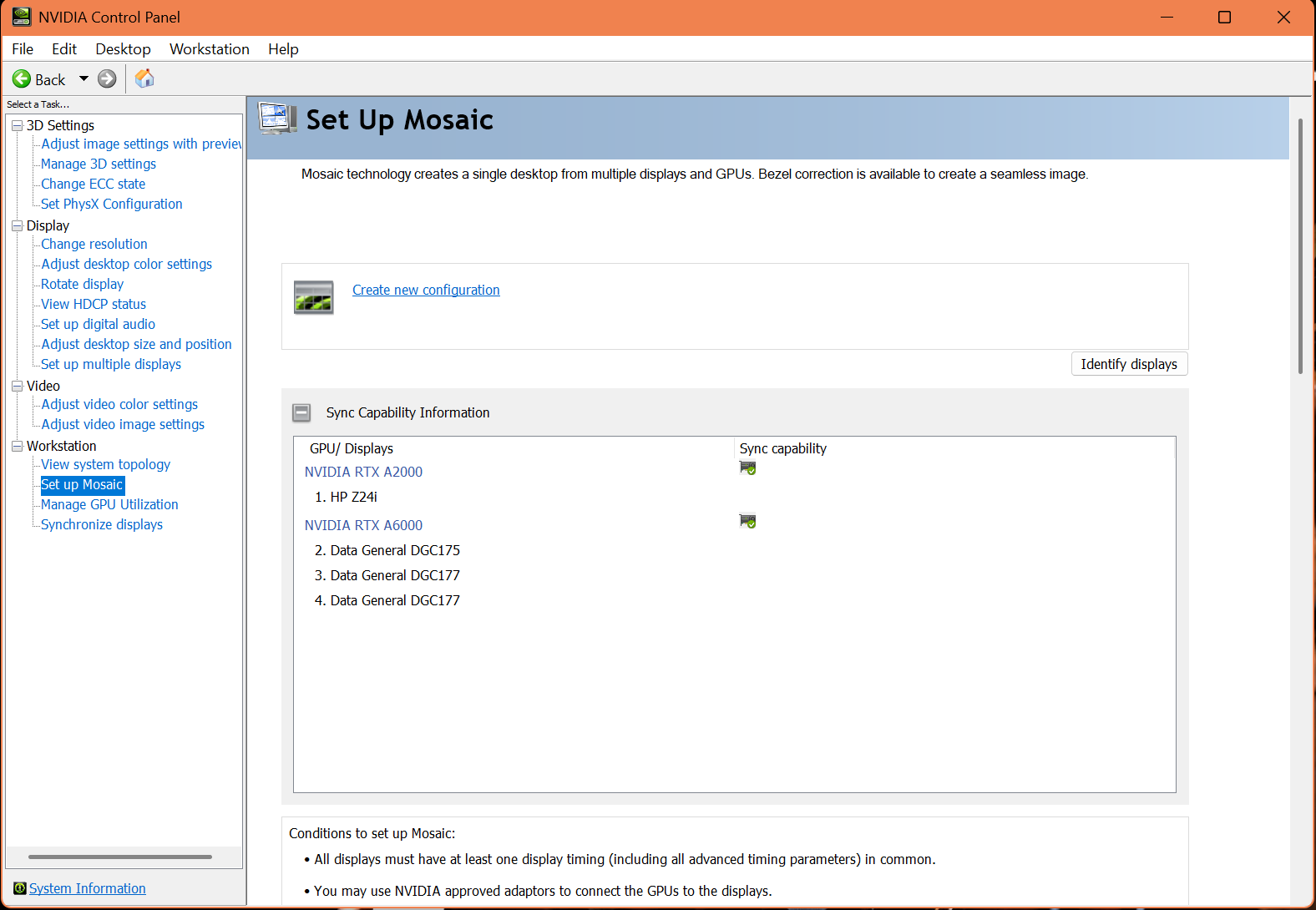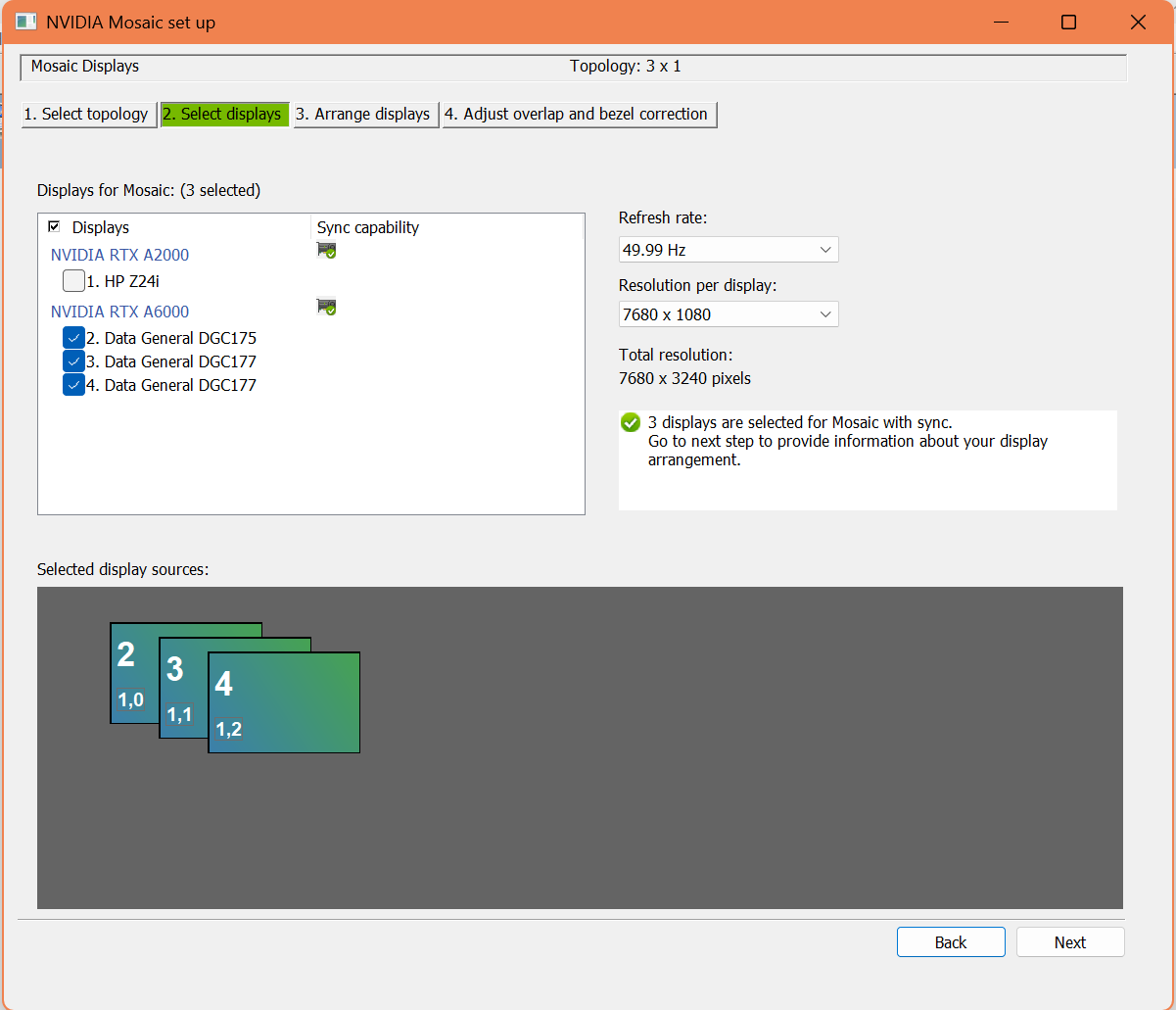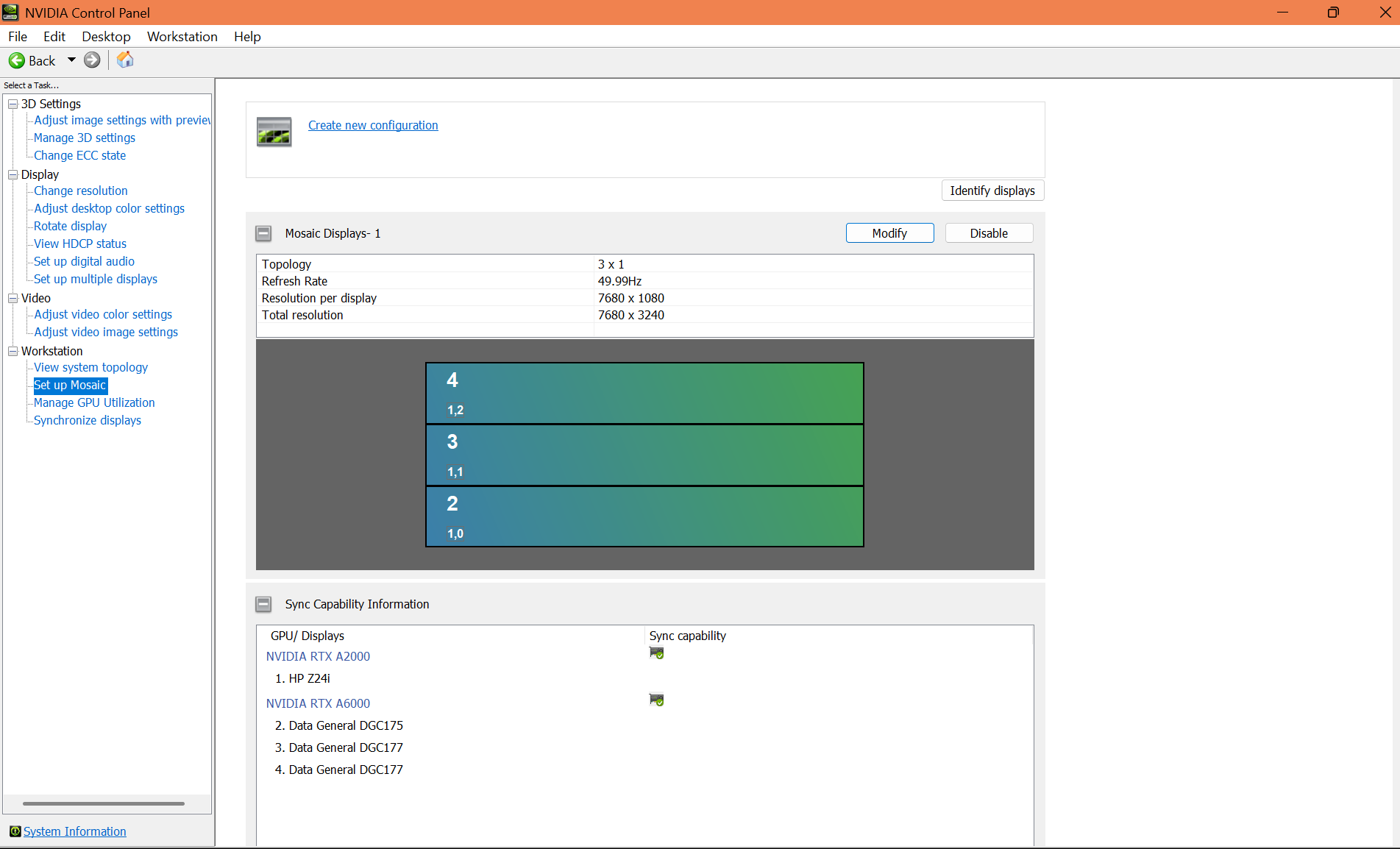Concept
A standard Mosaic video wall setup, using multiple displays connected to NVIDIA GPUs, can be extended with an additional monitor driven by a separate GPU as a control or auxiliary display. This extra monitor operates outside the Mosaic grid, but still extends the desktop, allowing you to run applications, monitoring tools, or system utilities (like a Viz Engine console, performance monitor, or task manager) without interfering with the main videowall content.
Setup Steps
Connect Hardware
Connect your primary videowall displays to NVIDIA Quadro GPUs (via Datapath: Optional, in case the number of monitors is larger than the number of display ports).
Connect the auxiliary monitor to a separate GPU.
If NVIDIA G-sync is used in the setup, make sure it is connected to the grid monitor's GPU.
Note: The GPUs must be from the same family.
Install Drivers and Configure Mosaic
Install the recommended NVIDIA driver corresponding to the installed Viz Engine version.
Configure NVIDIA Mosaic excluding the additional monitor on the second GPU.
Note: If the NVIDIA GPU driver is already installed and an additional GPU is added, the additional GPU may not be detected until the NVIDIA GPU driver is reinstalled.
Identify Display Layout
Open the NVIDIA Control Panel > Workstation > Set up Mosaic.
Select Identify Displays to determine which display is on which output.
Apply and Confirm Layout
Wait for the layout to apply, and the screens refresh (may take a few seconds).
Verify that:
The Mosaic videowall functions as a unified display, and the mosaic looks as expected.
If you are using a G-sync, ensure all monitors are synchronized (Workstation > View System Topology).
The control monitor appears as a separate extended desktop, distinct from the mosaic.
Using the Control / Auxiliary mMonitor
The Viz Engine should be started on the mosaic videowall grid GPU:
Starting Viz Engine in video wall mode using the starting parameters
-n -w -G<n>.The renderer window appears on the video wall monitors.
The Viz Engine console can be moved to the control monitor.
Starting Viz Engine in Viz Artist mode using the starting parameters
-u1 -y -G<n>.The Viz Artist and console windows can be moved between monitors.
When switching to On Air mode, make sure to select the correct monitor
Information: <n> represents the index of the GPU connected to the Mosaic, depending on how Windows detects the GPU, this can be 1 or 2.
Information: When Viz Artist is hosted in the control monitor, it was observed that the scene tree panel is not resizable, as a workaround, detach the scene tree group, or the scene editor group.
Information: Specific to Mosaic +1 setup, changing Vulkan/OpenGL present method setting in the NVIDIA Control Panel to Prefer layered on DXGI swapchain showed stability in FPS metrics.
See Also



